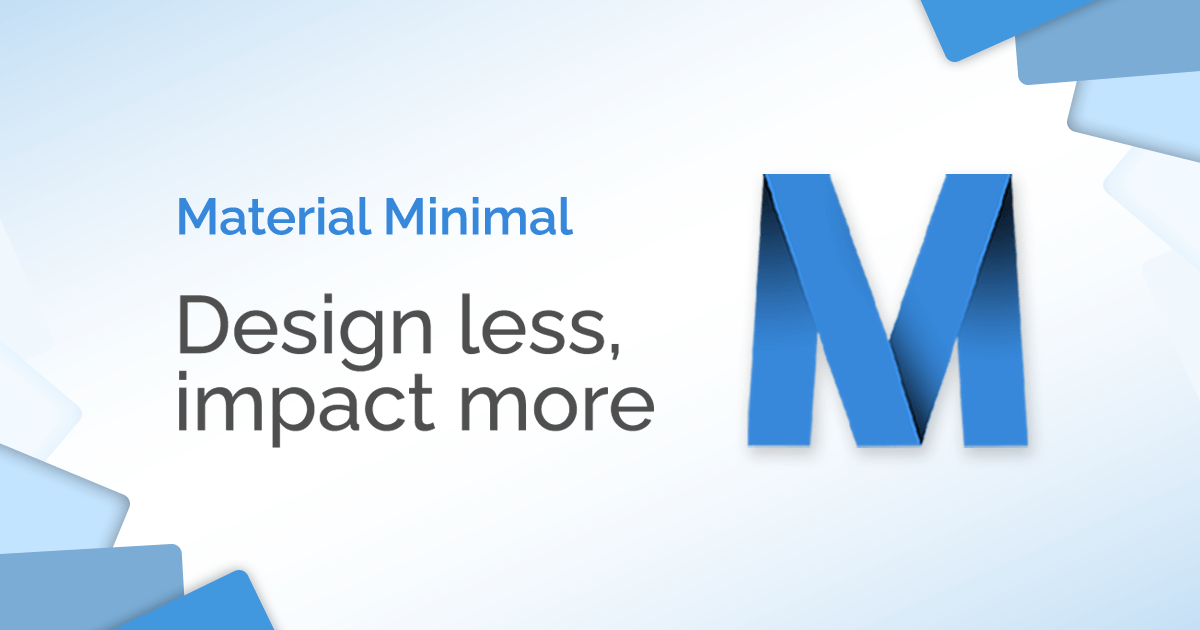WebDesign Tutorial - Material Minimal Core Values
Material Minimal - Design less, impact more
This is part 23. You can find the part 22, Nature inspired design, here.
Material Minimal Core Values
Now that we've covered the basics of Material Design and the theory behind it, it's time to take a look at Material Minimal.

The foundations of the Material Minimal design system are three core values.
Material Minimal is:

Material Minimal is inspired by the physical world and its textures, including how they reflect light and cast shadows. Material surfaces reimagine the mediums of paper and ink. This value is proudly inherited from Material Design.

It's a style that needs to breathe. It loves space and lightness. Minimalist and clean in form, it is supposed to prevent the user from feeling overwhelmed and confused. Material Minimal wants to be the stage where the content is the main actor.

It grows with your project. A clear hierarchy and strict rules from the very beginning lay a solid foundation so that the UI is able to provide an excellent user experience, even when its complexity increases significantly.
These values are reflected in some of the most important principles:
Accessibility and usefulness as fundamental principles
Clear hierarchy of elements and colours
Clear contrast
Subtle shadows (often smudged with colour)
Gently rounded corners in the components
Focus on details
Bright backgrounds (however, full dark mode is welcome)
Extensive whitespace
Big, readable headings
Clear and accessible typography
Real-life photography
Limited use of effects
In general, UI designed with Material Minimal should be light, clean, fresh, and aesthetically pleasing.
Next part - Material Minimal Principles
Material Minimal, which is basically Material Design on steroids can be found here on Figma.
Material Design for Bootstrap is a UI Kit, that uses Material Minimal, check it out here.
And TW Elements, our newest child is based on Tailwind CSS. Check it out!
